Growing Bell Peppers can be a fun and rewarding experience, especially when you harvest those crunchy and juicy veggies. However, getting your plants to produce the best peppers is difficult. Fortunately, you can follow some tips and tricks to help ensure success. Growing Bell Peppers can be a fun and rewarding experience for any gardener. You can ensure your peppers grow healthy and delicious with the right tips and techniques.
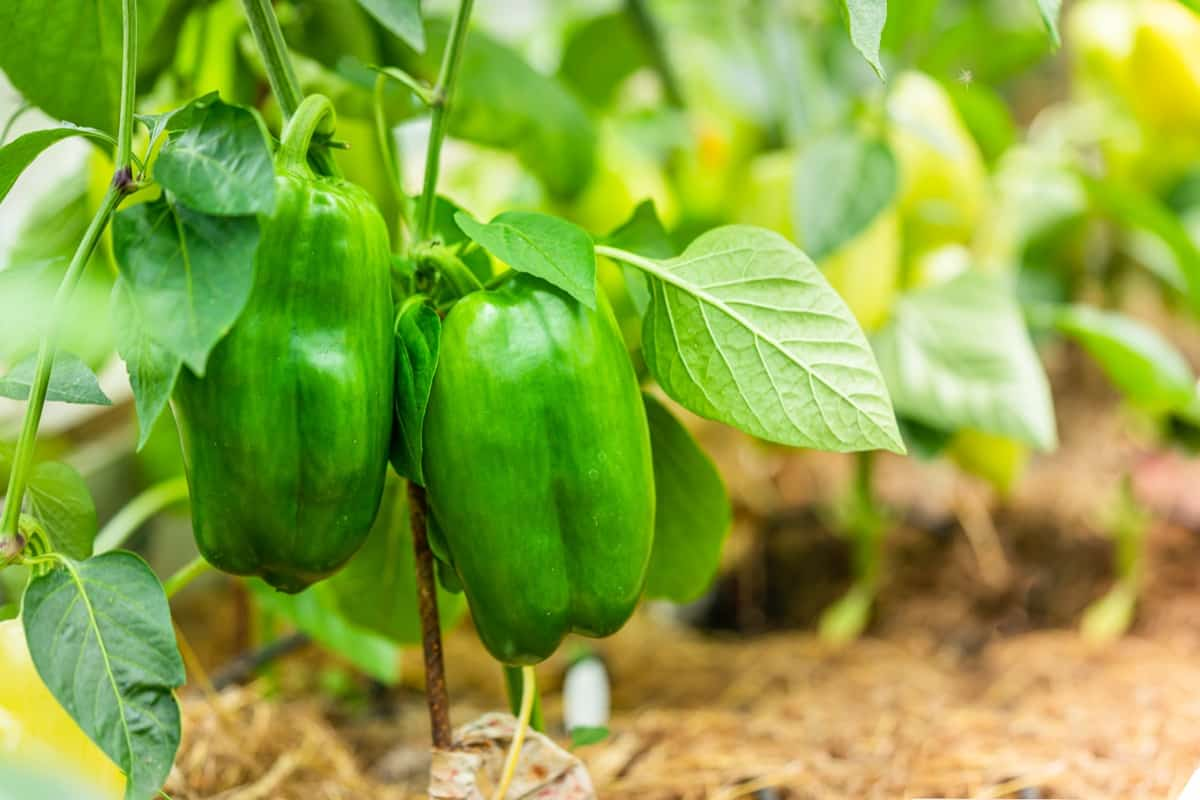
Remember to choose the appropriate type of pepper based on your preference, climate, and growing conditions. Then, ensure they have plenty of sunlight, water, and nutrients throughout their growing season. Once you have harvested your Bell Peppers, endless recipe options are available to showcase their sweet flavor in various dishes.
Expert Tips for Growing the Tastiest Bell Peppers
Go for the Best Varieties
California Wonder – California Wonder is a widely known and popular variety of Bell Pepper. Its vibrant, glossy green color makes it easy to recognize in the produce aisle. One reason California Wonder stands out among other varieties is its sweet taste. California Wonder peppers are a delicious addition to any meal while providing numerous health benefits.
Purple Beauty – Purple Beauty is a stunning variety of Bell Pepper that adds an eye-catching pop of color to any dish. One great thing about Purple Beauty peppers is that they are incredibly versatile. They make great additions to your favorite recipes but also have some health benefits.
Chocolate Beauty – As its name suggests, this variety has a deep chocolate color that makes for a striking addition to any dish. But it’s not just about appearances, and these peppers also have a sweet, rich flavor with just a hint of spice.
Yankee Bell – Yankee Bell is a vibrant and flavorful Bell Pepper variety that adds color and taste to any dish. This type of Bell Pepper features thick walls, perfect for stuffing or grilling. The Yankee Bell is also known for its mild to medium heat level, which makes it versatile in the kitchen. One of the unique characteristics of Yankee Bells is their shape – they are typically shorter and wider than other types of Bell Peppers.
Choose the Best Soil
Choosing the right soil is crucial to growing healthy and tasty Bell Peppers. The soil is well-draining, fertile, and rich in organic matter. Before planting your pepper seeds or seedlings, prepare the soil properly. Bell Peppers prefer slightly acidic soils with a pH range between 6.0-7.0 for optimal growth. If your soil’s pH level is outside this range, you can add lime to increase acidity or sulfur to decrease it.
In case you missed it: How to Grow and Care for Campanula Bellflower in Your Garden
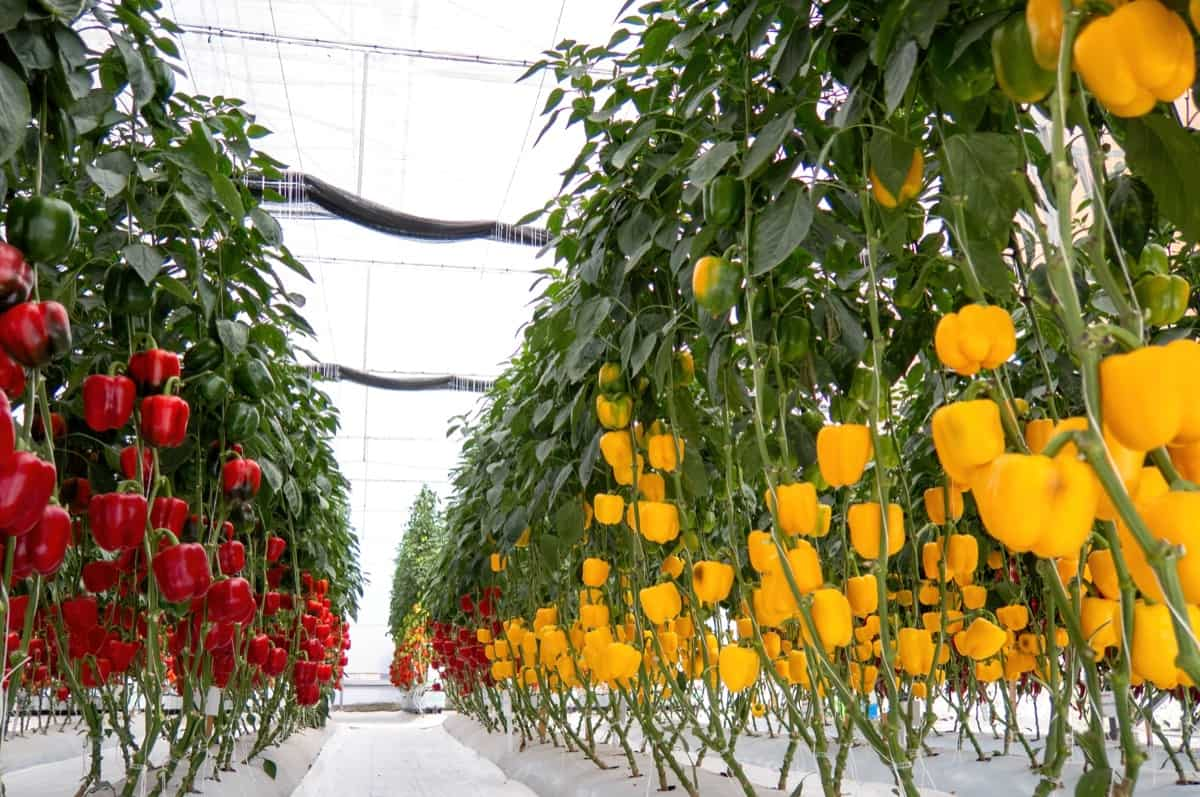
Next, loosen up the topsoil by digging at least six inches deep and removing any weeds or rocks from the area where you plan to plant your Bell Peppers. After preparing the soil bed, mix in compost or well-rotted manure to improve fertility and provide essential nutrients for plant growth.
You can also add perlite or vermiculite to improve drainage if necessary. When choosing which type of fertilizer to use, look for products specifically formulated for vegetables, such as 5-10-10 NPK (nitrogen-phosphorus-potassium) ratio fertilizers. Selecting a high-quality potting mix and thorough preparation will result in healthier plants that produce delicious fruit throughout their growing season.
Use Stress Techniques
If you want to grow the tastiest Bell Peppers ever, it’s essential to experiment with stress techniques. This may sound counterintuitive, but it helps plants produce more flavorful and nutritious fruit. One way to induce stress is by withholding water for a short period. When plants experience drought-like conditions, they naturally prioritize their survival mechanisms through overgrowth. As a result, this can lead to smaller but much sweeter fruits.
Another technique is pruning or pinching off some leaves and branches from the plant when it reaches a certain height or size. This can help divert energy toward pepper production instead of foliage growth. You can also try exposing your Bell Pepper plants to extreme temperatures like heat or cold shock during certain stages of their development.
This stimulates them to produce stronger stems and firmer fruits, less susceptible to pests and other diseases. However, keep in mind that while these stress techniques may enhance your crop yield quality-wise, you need not take them too far, as excessive exposure will only harm rather than benefit the plant’s overall health status.
Use Limestone
Limestone is a natural mineral that can balance the soil pH levels for Bell Peppers. It contains calcium carbonate, which neutralizes acidic soils. Bell Peppers require slightly alkaline soil with a pH between 6.0 and 6.8. Applying limestone to your garden bed or container before planting your Bell Pepper seedlings will ensure optimal growing conditions. Mix crushed limestone into the topsoil or sprinkle it on the soil surface.
It’s important not to overdo it with limestone as excess can raise the pH level too high, making it difficult for plants to absorb nutrients properly. Follow package instructions carefully based on your specific needs and soil test results. Limestone in moderation helps provide a more stable environment for your Bell Pepper plants, leading to healthy growth and maximum yield at harvest time.
In case you missed it: Growing Peppers from Seed to Harvest: For Bell Peppers, Chilli Peppers, Spicy/Hot Peppers, Sweet Peppers, and Jalapeno Peppers

Treat with Coffee Grounds
One unique and effective way to grow the tastiest Bell Peppers is by treating them with coffee grounds. Coffee grounds are a rich nitrogen source for plant growth and development. Additionally, they contain small amounts of phosphorus and potassium that promote flowering and fruiting. To use coffee grounds on your Bell Pepper plants, sprinkle them directly on top of the soil or mix them into the soil before planting.
You can make a liquid fertilizer by steeping used coffee grounds in water overnight, straining out the solids, and using the resulting solution to water your plants. Aside from providing nutrients to your Bell Pepper plants, coffee grounds can also help improve soil structure. They increase organic matter content in the soil while improving drainage and aeration.
However, you should not overdo it with the coffee ground application, as excess nitrogen can cause leafy growth at the expense of fruit production. Aim for one cup of coffee grounds per square foot of garden bed per month. Incorporating coffee grounds into your gardening routine boosts the health and productivity of your Bell Pepper plants while promoting overall soil health.
Try Epsom Salt Spray
Epsom salt contains magnesium sulfate, an essential nutrient that can help improve the plant’s overall health. You need one tablespoon of Epsom salt mixed and one gallon of water to make Epsom salt spray. Apply this solution directly onto the leaves of your pepper plants every two weeks or so during their growing season. One benefit of using Epsom salt spray is improving the plant’s ability to absorb nutrients from the soil.
This means that your Bell Peppers will have access to more minerals and vitamins, which can result in bigger and tastier fruits. Spraying your plants with this solution may also help prevent blossom end rot or yellowing leaves caused by magnesium deficiency. However, it’s important to note that while Epsom salt is generally safe for most garden vegetables, excessive application may lead to over-fertilization, harming your plants. So always follow instructions carefully and avoid applying too much too often.
In case you missed it: Best Season to Grow Bell Pepper/Capsicum at Home in India: in Pots, Terrace, Apartment Balcony, and Backyards
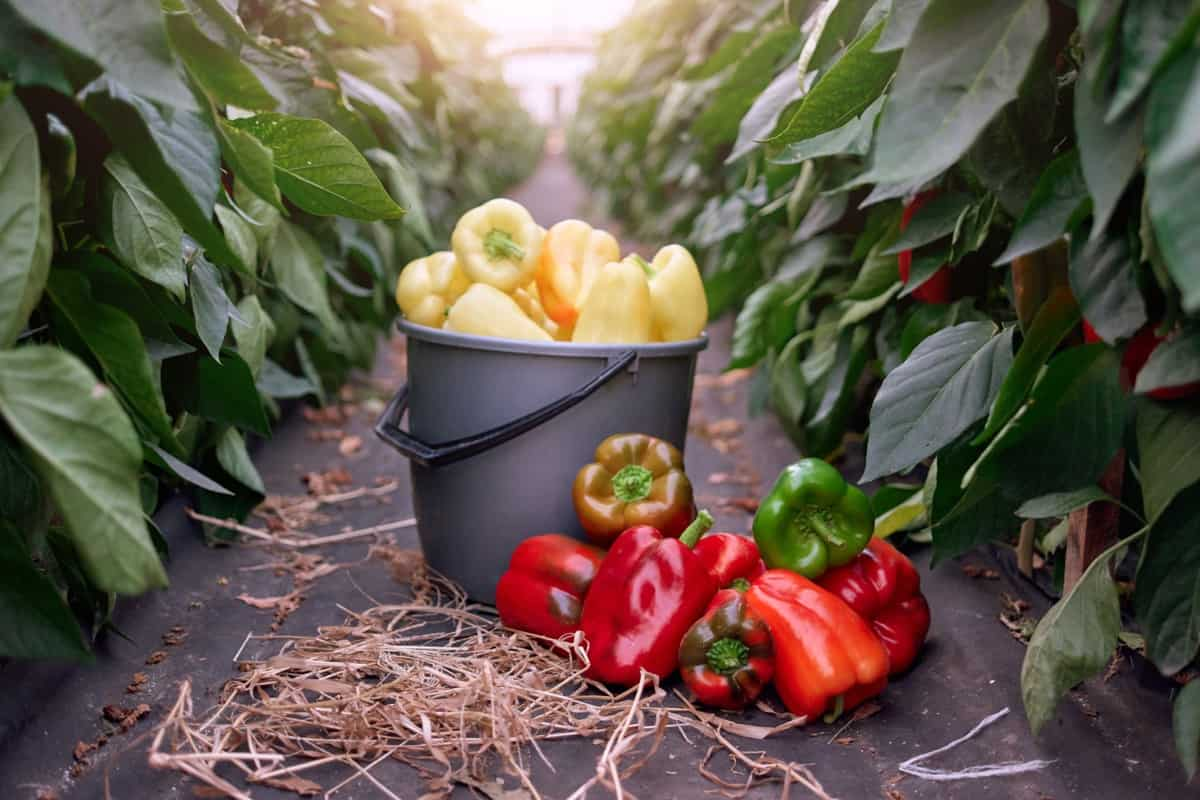
Utilize Fish Emulsion Fertilizer
When growing Bell Peppers, utilizing fish emulsion fertilizer can be a game-changer. This organic fertilization method is created by preserving fish remains through fermentation and mixing it with water. The resulting liquid contains all the nutrients plants need for healthy growth, including nitrogen, phosphorus, and potassium. One of the benefits of using fish emulsion fertilizer is its ability to improve soil health.
Adding this fertilizer to your garden bed or container helps increase soil microbial activity, enhancing plant nutrient uptake and root development. Aside from enhancing soil health, another advantage of using fish emulsion fertilizer is its versatility. You can use it at any stage during the growth cycle, from seedlings up until fruiting – making it convenient for growers who want an all-in-one solution. As such, use fish emulsion sparingly and follow recommended usage instructions carefully. Incorporating this natural fertilization method into your gardening routine can help you grow healthier Bell Peppers while improving soil quality.
Companion Planting
Companion planting refers to planting different crops for benefits like increased yields, pest control, and soil improvement. Companion planting can be a very useful tool for growing Bell Peppers. The best plant to grow alongside Bell Peppers is basil. This herb not only repels pests but also improves the flavor of the peppers. Marigolds are another great option, as they help keep nematodes at bay.
Another beneficial companion plant for Bell Peppers is Onions or Garlic. These plants naturally deter harmful insects that may damage your pepper crop. When considering companion plants for Bell Peppers, you should also consider how they will affect each other’s growth patterns. Employing companion planting when growing Bell Peppers can significantly benefit your harvest, reducing the need for chemical pesticides and fertilizers.
In case you missed it: Bell Pepper Gardening For Beginners, How To Start
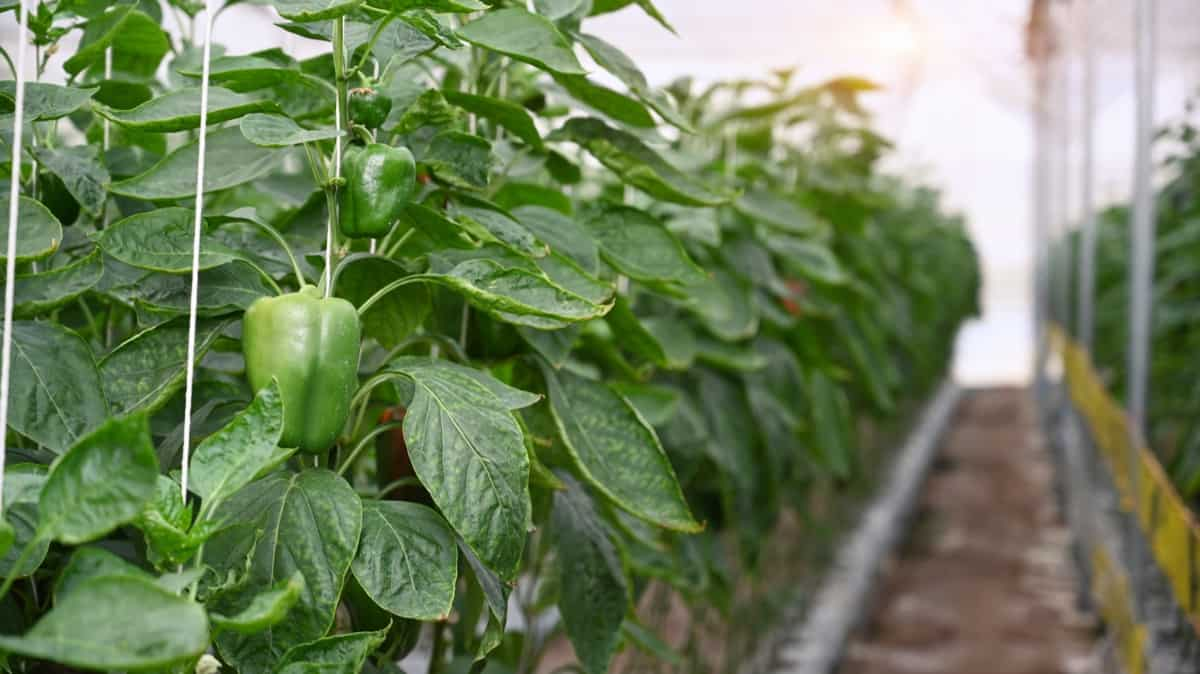
Employ Shade Cloth in Hot Climates
Growing Bell Peppers in hot climates can be challenging, but using shade cloth can help your plants thrive even in scorching temperatures. Shade cloth is a lightweight fabric that protects from the sun’s intense rays while allowing air and water to flow through. To use shade cloth for your Bell Pepper plants, drape it over your garden bed or construct a frame to hold it above the plants. You can adjust the shade provided by choosing a higher or lower shading percentage.
Using shade cloth has several benefits for growing Bell Peppers in hot climates. First, it helps regulate temperature and prevent heat stress on the plants. Second, it reduces moisture loss from leaves and soil due to evaporation. It protects against sunburn and damage to fruit. Too much shade could also hinder growth if not used properly. Be sure to monitor plant growth and adjust accordingly based on their needs. Employing shade cloth is an effective way to combat harsh sunlight during summer and keep your Bell Pepper plants healthy all season.
Harvest at the Right Time
Harvesting Bell Peppers at the right time ensures they are flavorful, juicy, and tasty. Picking them too early or late can result in bland or overripe fruit. Firstly, wait for the pepper fruit to reach its full size before picking it. This will ensure that it has developed all of its flavors and nutrients. Look out for any wrinkles on the skin, as this could indicate over-ripeness.
Check the color of your Bell Pepper. Depending on the variety, ripe bells may be green, red, yellow, or orange when fully matured. Pick them when their color is bright and vibrant. Give your Bell Pepper a gentle squeeze with your fingers. If it feels firm but still slightly soft without any visible blemishes or damage, then it’s ready to pick. Use pruning shears or scissors when harvesting instead of pulling them off by hand, which can cause damage to both fruit and plant.
In case you missed it: Growing Vegetables In Belgium – Planting Calendar
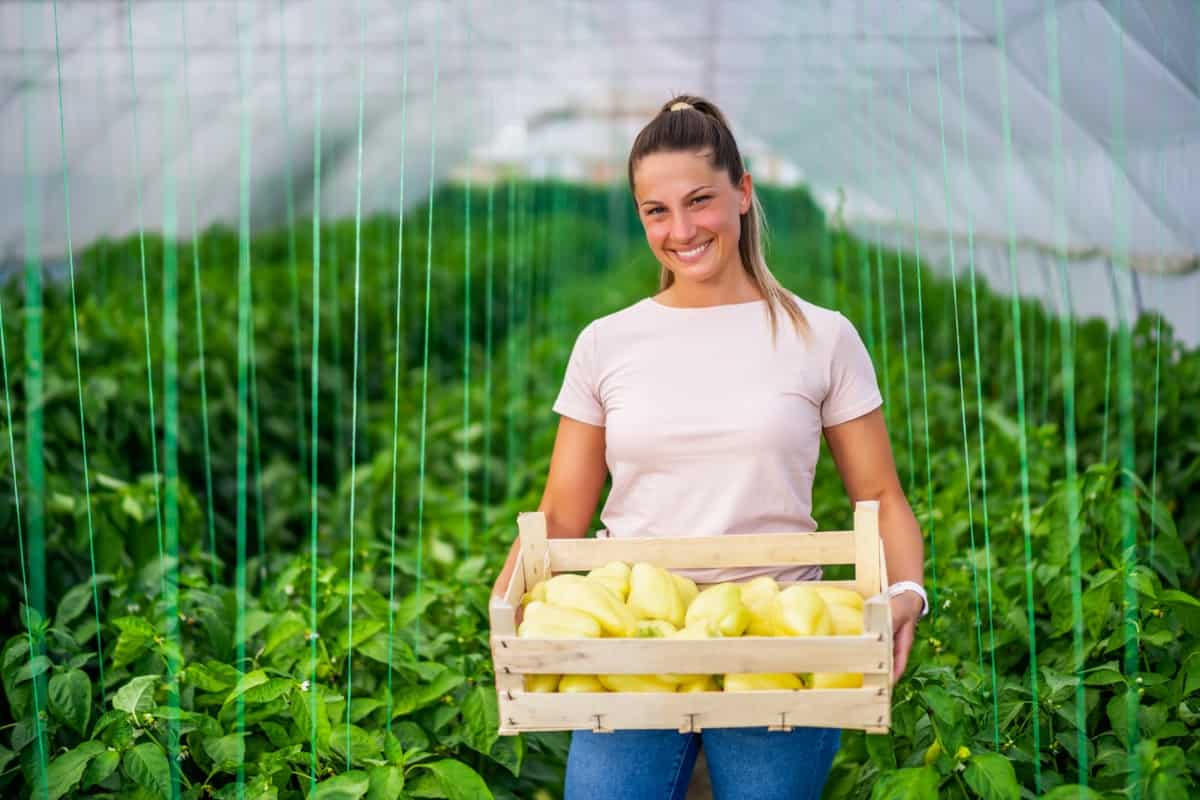
Conclusion
Growing Bell Peppers is a satisfying and rewarding experience for any gardener. While it may seem daunting to grow these vegetables, you can produce healthy and tasty Bell Peppers in your home garden with the right tips and techniques. Remember to choose the best varieties that suit your climate and soil conditions, experiment with stress techniques to increase yield and flavor intensity, try natural fertilizers like Epsom salt spray and fish emulsion fertilizer, and employ companion planting strategies to repel pests naturally.
- Broccoli Seed Germination and Selection
- Asparagus Seed Germination and Variety Selection
- Seasonal Flower Gardening: Best Practices for Spring, Summer, Fall, and Winter
- How to Grow Hibiscus from Flower
- Plantation Ideas for Home Decoration: A Beginners Guide
- Flower Garden Designs and Layouts for Beginners
- Planting and Spacing Techniques in Papaya: A Beginner’s Guide
- Growing Gold: Essential Techniques for Planting Pineapples
- How to Make Kalanchoe Plant Bushy: Home Remedies and Solutions
- 11 Reasons Why Your Gardenia is Not Blooming: Home Remedies and Solutions
- Eco Elegance: The Guide to Designing a Drought-Tolerant Landscape
- Gardening on a Slope: Strategies for Hillside Landscaping
- Nourish and Flourish: Top Organic Mulches for Thriving House Plants
- Everything You Want to Know about Indian Mogra Flower: Discover Uses and Growing
- Green Thumb Success: Expert Tips for Cultivating Greenhouse Pumpkins All Year Round
- Maximize Growth & Flavor: The Ultimate Guide to Companion Planting in Herb Gardens
- How to Control Rhododendron Problems Naturally: Home Remedies and Organic Ways to Fix Them
- Natural Magic: The Remarkable Benefits of Cinnamon for Plants
- Best Steps to Revive Dying Tulip with Natural and Organic Treatment
- 10 Reasons Why Your Angel Trumpet is Not Blooming: Remedies and Treatment
- How to Fix Periwinkle Leaf and Flower-Related Problems: Natural Remedies and Solutions
- How to Fix Zinnias Leaf and Flower Problems: Discover Natural and Home Remedies
- Organic Steps to Induce Lemon Tree Flowers: A Comprehensive Guide
- Bloom Booster: Crafting the Perfect Homemade Bougainvillea Fertilizer
- Optimizing Growth: A Guide to Applying NPK Fertilizer for Potted Plants
- 10 Best Homemade Fertilizers for Rubber Plant: DIY Recipes and Application Method
- How to Boost Female Pumpkin Flowers: Effective Steps for More Flowers and High Yields
- Transform Your Indoor Garden: Top Benefits of Pink Salt for Houseplants
- 10 Best Homemade Fertilizers for Peacock Plants (Calathea): Easy DIY Guide
- Unlock Blooms: 9 Reasons Why Your Potted Chrysanthemum is Not Blooming
- 8 Reasons Why Your Potted Hibiscus is Not Blooming: Fix it with Simple Solutions
- Unlock Blooms: 9 Key Reasons Your Potted Frangipani Won’t Flower
- 10 Reasons Why Is My Ice Plant Not Blooming: Remedies and Treatment
- 10 Reasons Why My Potted Hydrangea Not Blooming: Treatment and Remedies
- 10 Reasons Why is My Wisteria Not Blooming: Remedies and Treatment
- 10 Reasons Why is My Goldfish Plant Not Blooming: Remedies and Treatment